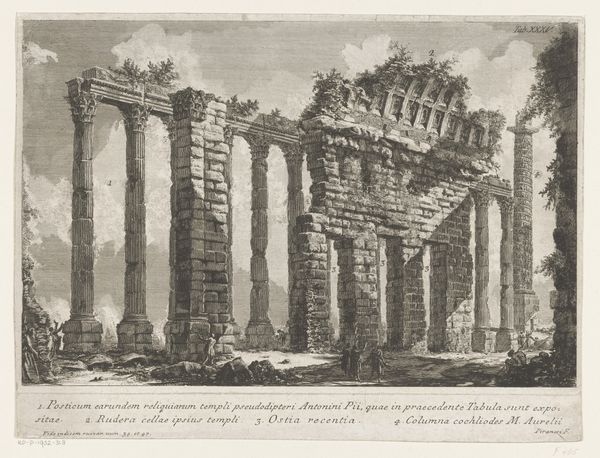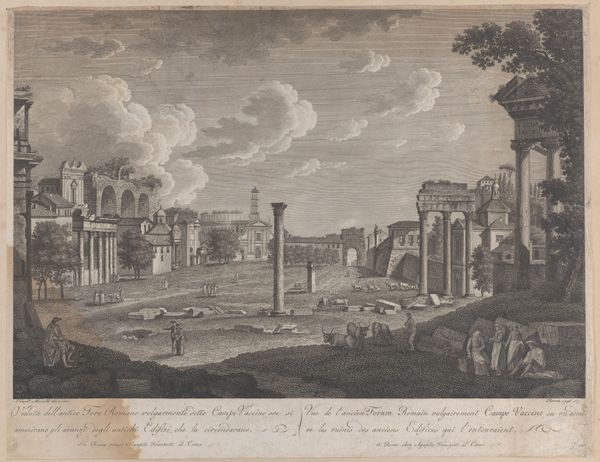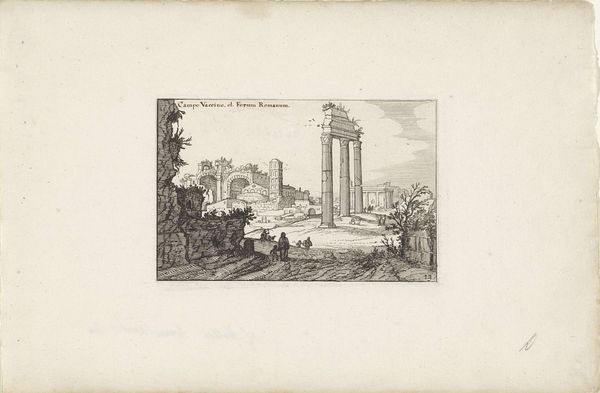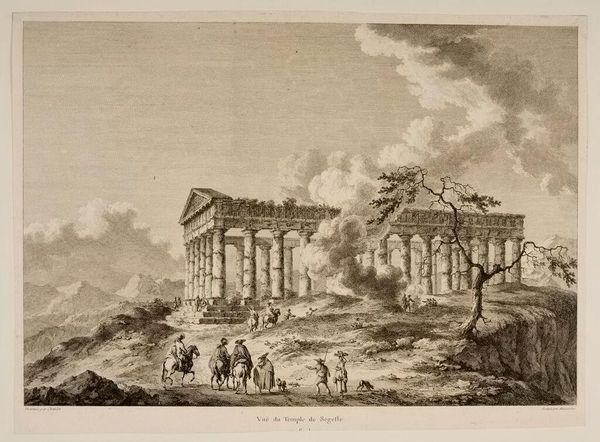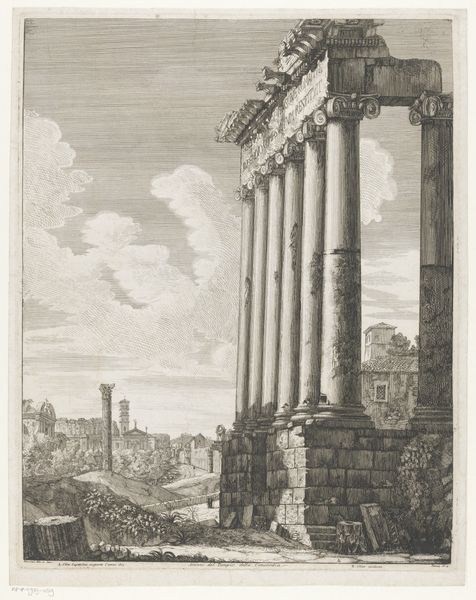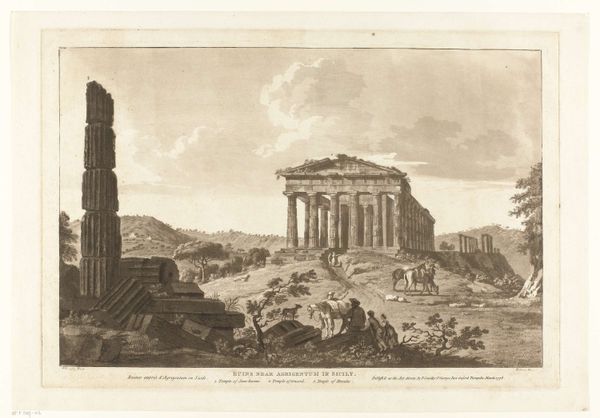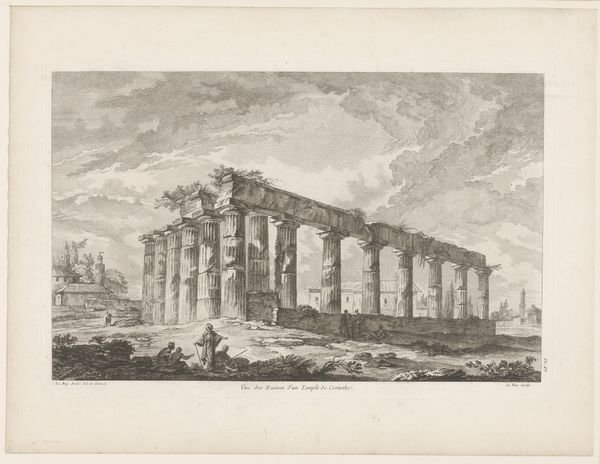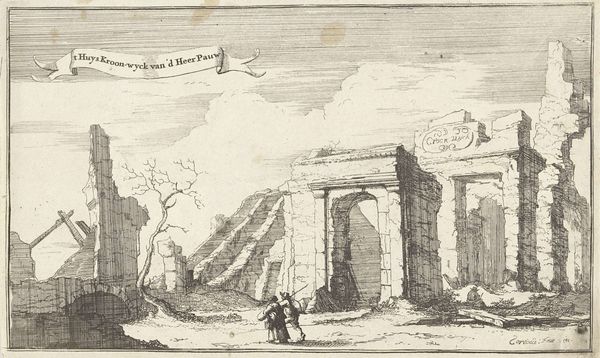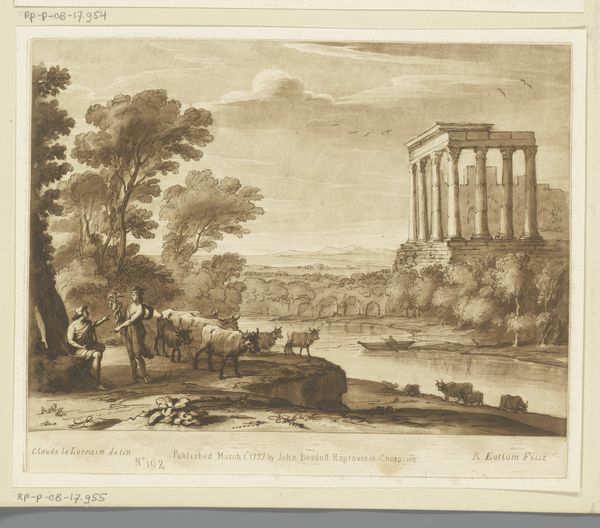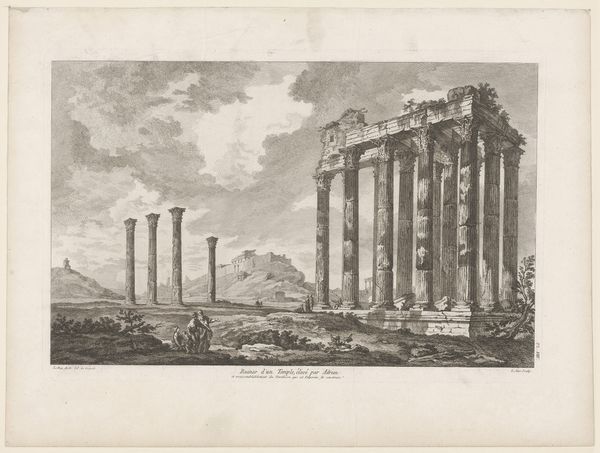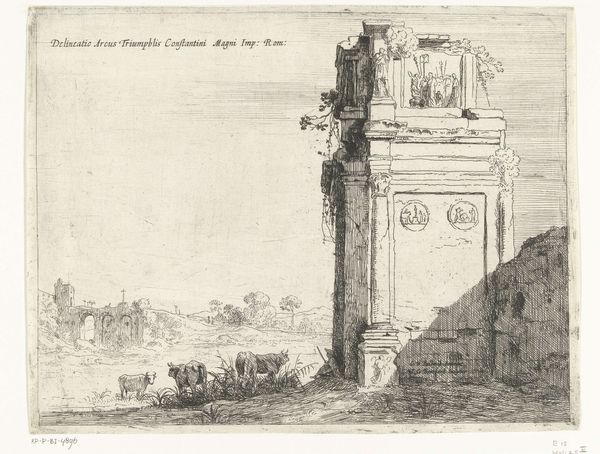
drawing, print, pencil, engraving, architecture
#
drawing
#
neoclacissism
# print
#
pencil sketch
#
landscape
#
ancient-mediterranean
#
pencil
#
engraving
#
architecture
Dimensions: height 245 mm, width 377 mm
Copyright: Rijks Museum: Open Domain
Curator: It's striking how the artist, Louis Mayer, has captured such imposing ruins with what appears to be a humble pencil and engraving. The title, "Resten van Juno Lucina tempel in het oude Agrigento," or Remains of the Juno Lucina Temple in Ancient Agrigento, really sets the stage, doesn't it? The date puts this rendering at 1778, right in the thick of Neoclassical interest in antiquity. Editor: The scene evokes a palpable sense of time collapsing, I think. The remnants of a once-mighty temple stand silhouetted against what seems a vast, indifferent sky. It stirs a quiet contemplation on the ephemeral nature of power and civilization. Curator: Absolutely. And you know, Neoclassicism as a movement really capitalized on those kinds of sentiments, using the architecture of ancient civilizations as a powerful symbol. Mayer is essentially offering a view onto the foundations of western culture, viewed through a romantic lens of decay. This temple dedicated to Juno Lucina, a protector of women and childbirth, stands as an ideal. Editor: Do you find the almost ghostly human figures intriguing? The juxtaposition of their delicate renderings next to the imposing ruins seems almost staged, doesn't it? Like figures in a play who seem humbled in the face of classical achievement. Curator: Well, one has to understand that for the Neoclassical period, this composition may not have been viewed as 'staged'. The human figures give a sense of scale, of course, but I agree they function as part of a meditation on what cultural touchstones signify. The emphasis isn’t simply on recreating accurate form, but on extracting a certain aura. That era wanted to understand its present in relation to a venerated past. Editor: True. Considering this print resides here at the Rijksmuseum, in the Netherlands, I wonder about its place within a larger collection. Curator: It likely served as both a visual document and a romantic echo of grandeur, intended to instill civic pride and a connection to a European intellectual heritage rooted in classical antiquity. I find it particularly engaging to reflect on this intersection of aesthetic fascination, archaeological documentation, and the social currents shaping the late 18th century. Editor: A compelling thought. Thanks for untangling some of the context!
Comments
No comments
Be the first to comment and join the conversation on the ultimate creative platform.
